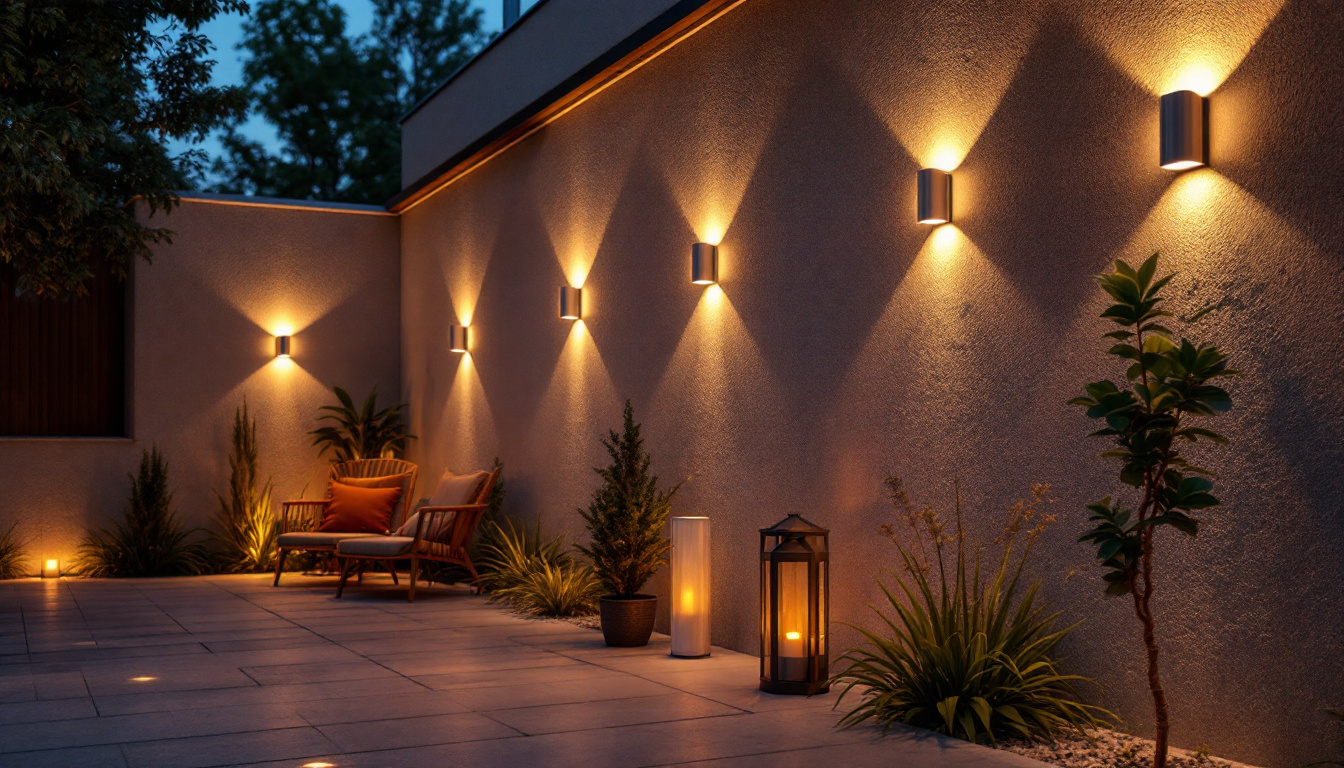
In the ever-evolving landscape of the lighting industry, contractors are constantly seeking ways to enhance their profitability while delivering exceptional service. As competition intensifies, understanding cost-saving strategies becomes crucial. This article delves into effective methods that lighting contractors can implement to optimize their operations, reduce expenses, and ultimately improve their bottom line.
Cost management is not merely about cutting expenses; it is about making informed decisions that lead to sustainable growth. For lighting contractors, effective cost management can help in various ways, including improving cash flow, enhancing project bidding accuracy, and increasing overall job profitability. By adopting a strategic approach to managing costs, contractors can ensure that they remain competitive in a rapidly evolving market while maintaining high standards of quality and service.
Before implementing any cost-saving strategies, it is essential to identify the areas where expenses can be trimmed without compromising quality. Common areas for potential savings include materials, labor, and overhead costs. By analyzing these components, contractors can pinpoint specific opportunities for improvement. Understanding the nuances of each area allows for tailored strategies that can yield the best results.
For instance, purchasing materials in bulk can lead to significant discounts, while optimizing labor schedules can reduce overtime costs. Additionally, reviewing overhead expenses, such as utilities and insurance, can reveal further savings opportunities. Contractors might also consider negotiating with suppliers for better rates or exploring alternative materials that offer similar quality at a lower price point. This comprehensive analysis not only aids in cost reduction but also fosters stronger relationships with suppliers and subcontractors, which can be beneficial in the long run.
In today’s digital age, technology plays a pivotal role in enhancing operational efficiency. Lighting contractors can utilize various software solutions to streamline project management, improve communication, and automate routine tasks. These tools not only save time but also reduce the likelihood of costly errors. Moreover, technology can provide valuable data analytics that help contractors make more informed decisions regarding their projects.
Investing in project management software can help contractors track budgets, timelines, and resources more effectively. Furthermore, using mobile applications for on-site communication can ensure that teams are aligned and informed, reducing the chances of miscommunication and delays. Additionally, adopting advanced technologies such as Building Information Modeling (BIM) can enhance project visualization and coordination, allowing for better planning and execution. By embracing these technological advancements, lighting contractors can not only improve their cost management practices but also enhance overall project outcomes, leading to higher client satisfaction and repeat business.
effective procurement strategies can significantly impact a contractor’s bottom line. By establishing strong relationships with suppliers and negotiating favorable terms, lighting contractors can secure better pricing and improved service levels. A well-structured procurement process not only enhances operational efficiency but also fosters innovation by allowing contractors to access cutting-edge products and technologies that can elevate their offerings in a competitive market.
Developing long-term relationships with suppliers can lead to more favorable pricing and terms. When suppliers recognize a contractor as a reliable partner, they may offer exclusive discounts or priority service, which can be invaluable during tight project timelines. Furthermore, these relationships can facilitate collaboration on product development, enabling contractors to influence the design and features of new lighting solutions that better meet their clients’ needs.
Additionally, maintaining open lines of communication with suppliers can provide insights into upcoming trends and innovations in lighting products, allowing contractors to stay ahead of the competition. Regular meetings and feedback sessions can help both parties align their goals, ensuring that suppliers understand the contractor’s specific requirements and challenges. This proactive approach not only strengthens partnerships but also positions contractors to leverage new technologies and sustainable practices that are increasingly important in today’s market.
Just-in-time (JIT) inventory management is a strategy that minimizes inventory costs by ordering materials only as they are needed. This approach reduces storage costs and the risk of excess inventory that may become obsolete. By streamlining the supply chain, contractors can respond more swiftly to project demands, ensuring that they maintain a competitive edge in a fast-paced industry.
By adopting JIT practices, lighting contractors can ensure that they have the right materials on hand without tying up capital in unnecessary stock. This strategy also encourages better planning and forecasting, leading to more accurate project timelines and budgets. Additionally, JIT inventory can enhance sustainability efforts by reducing waste associated with overproduction and excess materials. As contractors become more attuned to their inventory needs, they can also explore partnerships with local suppliers, further minimizing transportation costs and carbon footprints, while supporting the local economy.
As the push for sustainability grows, lighting contractors have a unique opportunity to embrace energy-efficient practices. Not only do these practices align with environmental goals, but they can also lead to substantial cost savings for both contractors and their clients.
Switching to energy-efficient lighting solutions, such as LED fixtures, can significantly reduce energy consumption and operational costs. While the initial investment may be higher, the long-term savings on energy bills and maintenance can make these options more cost-effective.
Moreover, many clients are increasingly interested in sustainable solutions, making energy-efficient products a selling point that can differentiate contractors in a competitive market.
Additionally, the lifespan of LED fixtures far exceeds that of traditional incandescent bulbs, often lasting up to 25,000 hours or more. This longevity not only reduces the frequency of replacements but also minimizes waste, contributing to a more sustainable approach to lighting. Furthermore, advancements in smart lighting technology allow for enhanced control over energy usage, enabling clients to adjust brightness levels and schedules based on their specific needs, further optimizing energy consumption.
Lighting contractors can also educate their clients on the benefits of sustainable practices. By providing information on energy savings, rebates, and environmental impact, contractors can position themselves as knowledgeable partners in sustainability.
Offering clients energy audits or assessments can further enhance this relationship, allowing contractors to identify specific areas for improvement and recommend tailored solutions that meet their clients’ needs.
Incorporating sustainable practices into project proposals can also be an effective strategy. By highlighting the potential for reduced carbon footprints and showcasing successful case studies, contractors can build trust and credibility with clients who are committed to making environmentally responsible choices. Additionally, staying informed about local and federal incentives for energy-efficient upgrades can empower contractors to guide their clients toward financial benefits that accompany their sustainable investments, making the transition to energy-efficient lighting not just an ethical choice, but a financially savvy one as well.
Labor costs are often one of the most significant expenses for lighting contractors. Therefore, finding ways to optimize labor efficiency can lead to substantial savings.
investing in employee training can yield significant returns. Well-trained staff are more efficient and less prone to mistakes, which can reduce rework and associated costs. Furthermore, skilled workers can complete tasks more quickly, allowing contractors to take on more projects and increase revenue.
Regular training sessions on new technologies, safety protocols, and best practices can help ensure that employees remain at the forefront of industry standards, ultimately benefiting the contractor’s reputation and profitability.
While employing a full-time workforce can provide stability, utilizing subcontractors for specific tasks can be a cost-effective strategy. Subcontractors can be hired for specialized work, allowing contractors to maintain flexibility and control over labor costs.
However, it is crucial to carefully vet subcontractors to ensure they meet quality standards and can deliver on time. Establishing clear contracts and expectations can help mitigate risks associated with subcontracting.
Efficient project management is essential for keeping costs in check and ensuring timely project completion. By adopting effective management techniques, lighting contractors can enhance their operational efficiency and client satisfaction.
Agile project management is a flexible approach that allows teams to adapt to changes quickly. By breaking projects into smaller phases, contractors can respond to client feedback and unforeseen challenges more effectively.
This method not only improves communication but also ensures that projects remain on track and within budget. Regular check-ins and updates can help identify potential issues early, allowing for timely interventions.
Thorough planning is the cornerstone of successful project execution. Before commencing any project, lighting contractors should conduct detailed assessments to identify potential challenges and resource requirements.
Creating comprehensive project timelines, budgets, and resource allocation plans can provide a clear roadmap for the team, reducing the likelihood of costly delays and miscommunication.
Effective marketing is essential for attracting new clients and retaining existing ones. However, marketing efforts should be cost-effective to ensure a positive return on investment.
Digital marketing offers a range of cost-effective options for reaching potential clients. Utilizing social media platforms, email marketing, and search engine optimization (SEO) can enhance visibility without breaking the bank.
By creating engaging content that showcases expertise and successful projects, lighting contractors can build their brand and attract new clients. Additionally, online reviews and testimonials can significantly influence potential clients’ decisions, making it essential to maintain a positive online presence.
Networking within the local community can lead to valuable business opportunities. Participating in industry events, trade shows, and local business groups can help contractors establish connections and gain referrals.
Moreover, engaging in community projects or sponsorships can enhance a contractor’s reputation and visibility, often leading to new client inquiries without substantial marketing expenditure.
In a competitive market, lighting contractors must continuously seek ways to optimize their operations and reduce costs. By implementing the strategies outlined in this article, contractors can enhance their profitability while maintaining high standards of service. From smart procurement practices and energy-efficient solutions to effective project management and marketing strategies, there are numerous avenues for cost savings that can lead to sustainable growth.
Ultimately, the key to success lies in a proactive approach to cost management, allowing lighting contractors to navigate the challenges of the industry while positioning themselves for long-term success.
Ready to take your lighting projects to the next level? At LumenWholesale, we provide you with the cost-effective solutions you need to stay competitive. Our spec-grade lighting products not only meet the highest industry standards but also come at unbeatable wholesale prices. Say goodbye to middleman markups and hello to a vast selection of reliable, high-performance lighting. With the added benefits of free shipping on bulk orders, LumenWholesale is your go-to source for premium lighting without the premium price tag. Elevate your business today by choosing Wholesale Lighting at the Best Value with LumenWholesale.

Discover how plug-in recessed lighting can transform your home’s energy efficiency.

Discover everything lighting contractors need to know about outside light poles in this comprehensive guide.

Discover the essential insights into LED wall lights for outdoor spaces as we address lighting contractors’ most frequently asked questions.

Discover how 4000K LED lights can transform your lighting projects and boost your contract wins.